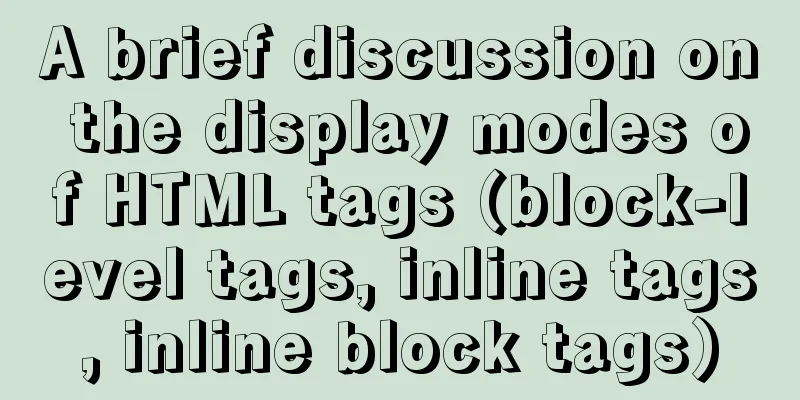Detailed explanation of incompatible changes in rendering functions in Vue3

Rendering API changesThis change will not affect <template> users
Render function parameters
// 2.0 rendering function export default {
render(h) {
return h('div')
}
}
// 3.x syntax export default {
render() {
return h('div')
}
}Render function signature changes
// 2.x
export default {
render(h) {
return h('div')
}
}
// 3.x
import { h, reactive } from 'vue'
export default {
setup(prop, {slots, attrs, emit}) {
const state = reactive({
count: 0
})
function increment() {
state.count++
}
// Return to render function return () => h(
'div',
{
onClick: increment
},
state.count
)
}
}VNode Props Formatting
// 2.x
{
class: ['button', 'is-outlined'],
style: {color: '#fffff'},
attr: {id: 'submit'},
domProps: {innerHTML: ''},
on: {click: submitForm},
key: 'submit-button'
}
// 3.x VNode structure is flat {
class: ['button', 'is-outlined'],
style: { color: '#34495E' },
id: 'submit',
innerHTML: '',
onClick: submitForm,
key: 'submit-button'
} Slot unificationChanged normal slots and scoped slots
// 2.x
h(LayoutComponent, [
h('div', {slot: 'header'}, this.header),
h('div', {slot: 'header'}, this.header)
])
// Scope slot:
// 3.x
h(LayoutComponent, {}, {
header: () => h('div', this.header),
content: () => h('div', this.content)
})
// When you need to introduce scoped slots programmatically, they are now unified in the $slots option // 2.x scoped slots
this.$scopedSlots.header
// 3.x writing this.$slots.header Removing $listeners The In Vue2, you can use this.attrs and this.attrs and this.listeners to access the attributes and event listeners passed to the component respectively. Combined with inheritAttrs: false, developers can apply these attributes and listeners to other elements instead of the root element.
<template>
<label>
<input type="text" v-bind="$attrs" v-on="$listeners">
</label>
</template>
<script>
export default {
inheritAttrs: false
}
</script>In Vue's virtual DOM, event listeners are now just attributes prefixed with on, making them part of the attrs object, so listeners are removed.
<template>
<label>
<input type="text" v-bind="$attrs" />
</label>
</template>
<script>
export default {
inheritAttrs: false
}
// If this component receives an id attribute and a v-on:close listener, the $attrs object will now look like this {
id: 'my-input',
onClose: () => console.log('close Event Triggered')
}
</script> $attrs now includes class and styleNow $attr contains all attributes, including class and style In 2.x, virtual DOM handles class and style specially, so they are not included in $attr, which will have side effects when using inheritAttr: false
<template>
<label>
<input type="text" v-bind="$attrs" />
</label>
</template>
<script>
export default {
inheritAttrs: false
}
</script>
<!-- Write -->
<my-component id="my-id" class="my-class"></my-component>
<!-- vue2 will generate -->
<label class="my-class">
<input type="text" id="my-id" />
</label>
<!-- vue3 will generate -->
<label>
<input type="text" id="my-id" class="my-class" />
</label>The above is a detailed explanation of the incompatible changes of rendering functions in vue3. For more information about incompatible changes of vue rendering functions, please pay attention to other related articles on 123WORDPRESS.COM! You may also be interested in:
|
>>: How to Find the Execution Time of a Command or Process in Linux
Recommend
Examples of new selectors in CSS3
Structural (position) pseudo-class selector (CSS3...
Detailed explanation of the functions and usage of MySQL common storage engines
This article uses examples to illustrate the func...
The difference between html empty link href="#" and href="javascript:void(0)"
# contains a location information. The default anc...
How to represent various MOUSE shapes
<a href="http://" style="cursor...
Uniapp uses Baidu Voice to realize the function of converting recording to text
After three days of encountering various difficul...
Detailed explanation of how to use Nginx + consul + upsync to achieve dynamic load balancing
Table of contents Prerequisites DNS domain name r...
Examples of preview functions for various types of files in vue3
Table of contents Preface 1. Preview of office do...
Solve the problem of Navicat importing database data structure sql reporting error datetime(0)
Error occurs: When exporting the database from My...
Detailed explanation of writing multiple conditions of CSS: not
The :not pseudo-class selector can filter element...
Node implements search box for fuzzy query
This article example shares the specific code for...
Use CSS to achieve circular wave effect
I often see some circular wave graphics on mobile...
CSS implementation code for drawing triangles (border method)
1. Implement a simple triangle Using the border i...
A brief discussion on front-end production: Is IE6 still necessary for compatibility?
The domestic market still has a certain demand fo...
Detailed steps to install the NERDTree plugin in Vim on Ubuntu
NERDTree is a file system browser for Vim. With t...
Solve the problem of margin merging
1. Merge the margins of sibling elements The effe...









